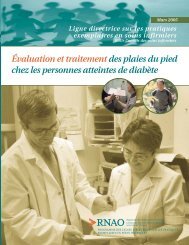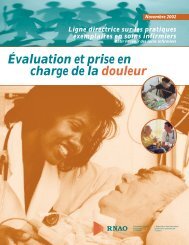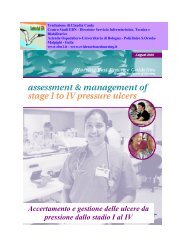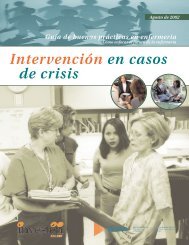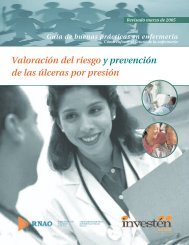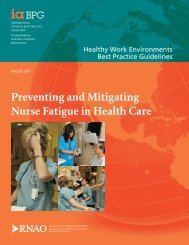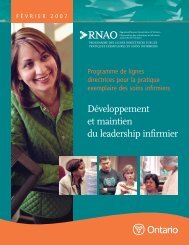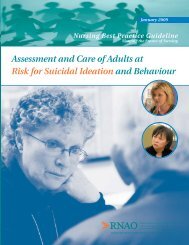Reducing Foot Complications for People with Diabetes - Registered ...
Reducing Foot Complications for People with Diabetes - Registered ...
Reducing Foot Complications for People with Diabetes - Registered ...
Create successful ePaper yourself
Turn your PDF publications into a flip-book with our unique Google optimized e-Paper software.
<strong>Reducing</strong> <strong>Foot</strong> <strong>Complications</strong> <strong>for</strong> <strong>People</strong> <strong>with</strong> <strong>Diabetes</strong><br />
24<br />
Practice Recommendations<br />
Recommendation • 1.0<br />
Physical examination of the feet to assess risk factors <strong>for</strong> foot ulceration/amputation<br />
should be per<strong>for</strong>med by a health care professional. (Level Ib)<br />
Recommendation • 1.1<br />
This examination should be per<strong>for</strong>med at least annually in all people <strong>with</strong> diabetes over<br />
the age of 15 and at more frequent intervals <strong>for</strong> those at higher risk. (Level IV)<br />
Discussion of Evidence:<br />
Several clinical practice guidelines (ADA, 1999; CDA, 1998, 2003; Hutchinson et al., 2000; NZGG, 2000)<br />
recommend annual foot examinations <strong>for</strong> all people <strong>with</strong> diabetes to detect feet at higher risk<br />
of ulceration. However, there is no direct evidence to identify the optimal content or frequency<br />
of visual inspections and examinations. Rather, the evidence supports regular inspection.<br />
Boulton, Meneses and Ennis (1999) explain the need <strong>for</strong> regular surveillance. <strong>People</strong> <strong>with</strong><br />
diabetes require contact <strong>with</strong> health professionals on a regular basis <strong>for</strong> monitoring,<br />
rein<strong>for</strong>cement of diabetes and foot care education, and <strong>for</strong> support and encouragement to<br />
enact preventative self-care practices.<br />
Recommendation • 2.0<br />
Nurses should conduct a foot risk assessment <strong>for</strong> clients <strong>with</strong> known diabetes.<br />
This risk assessment includes the following:<br />
History of previous foot ulcers;<br />
Sensation;<br />
Structural and biomechanical abnormalities;<br />
Circulation; and<br />
Self-care behaviour and knowledge.<br />
(Level IV)




